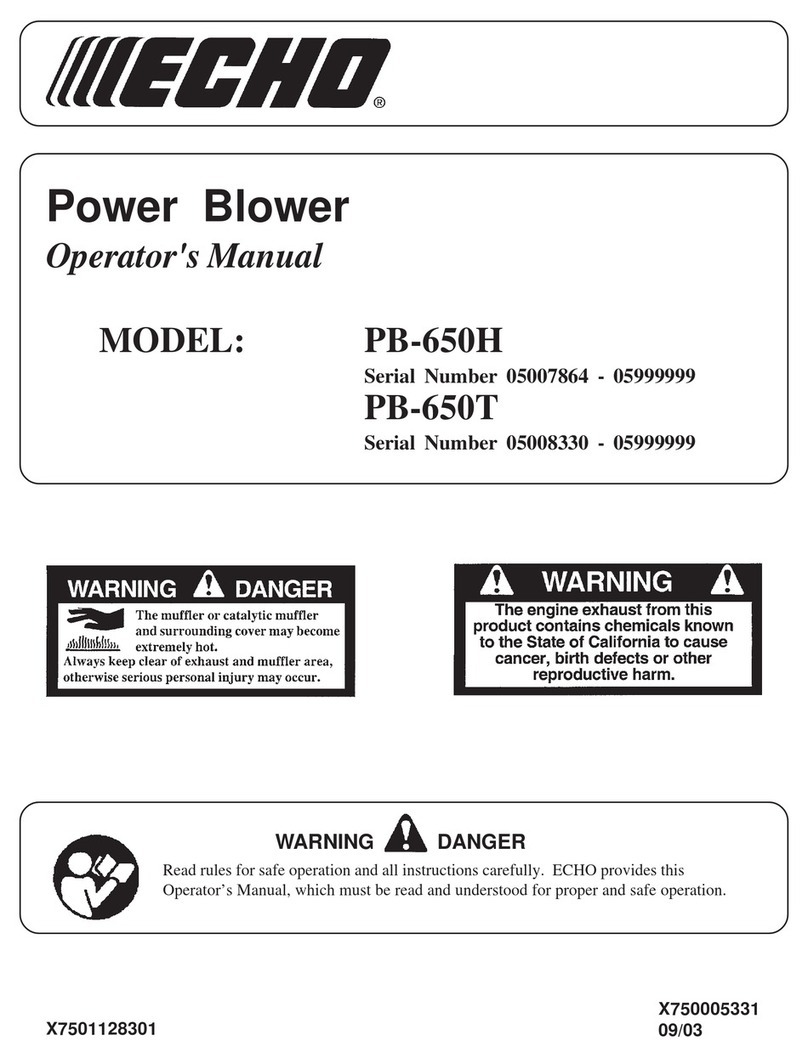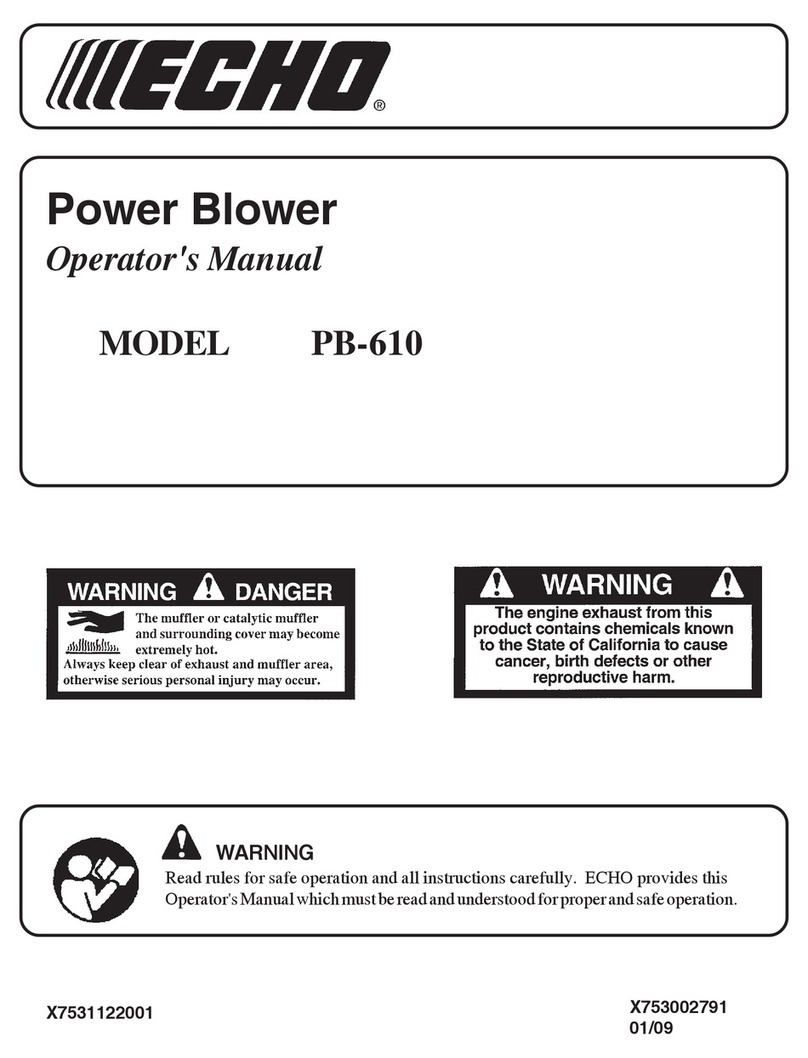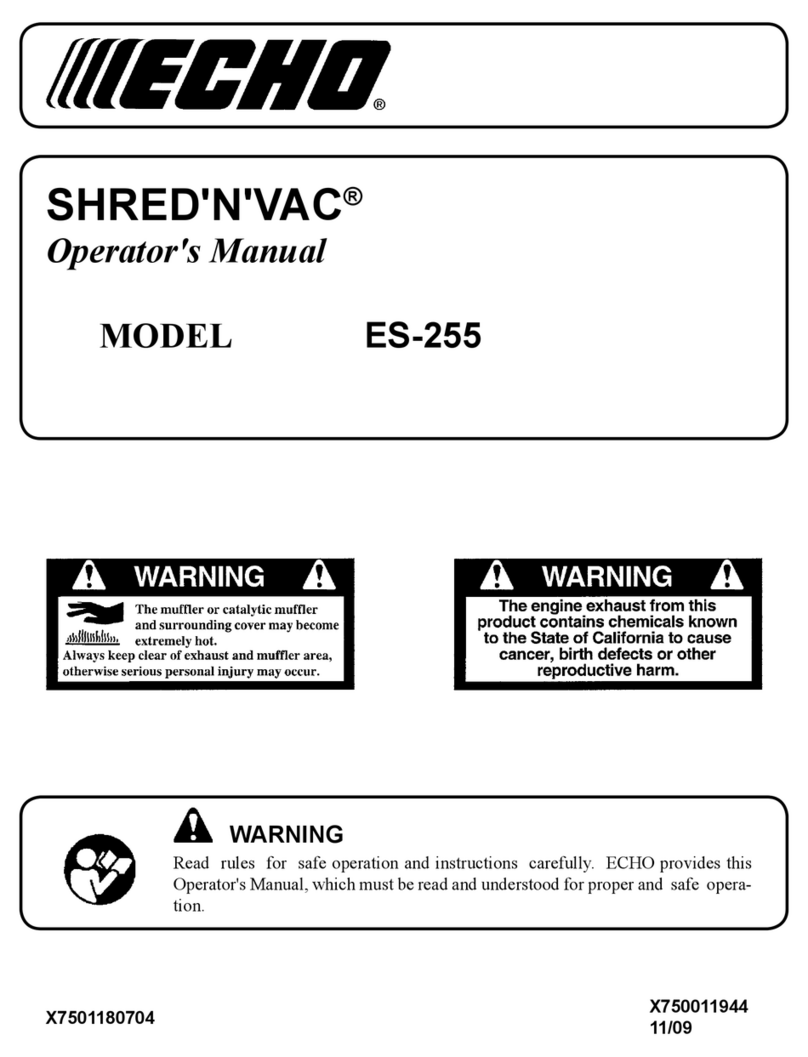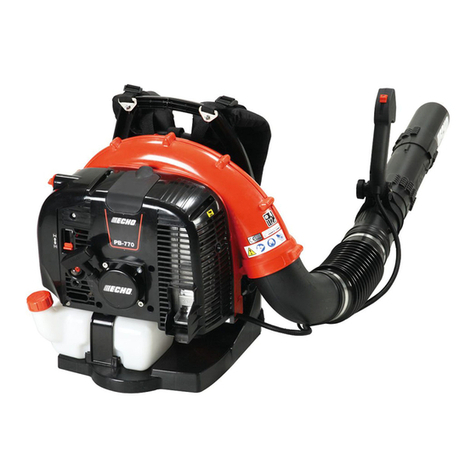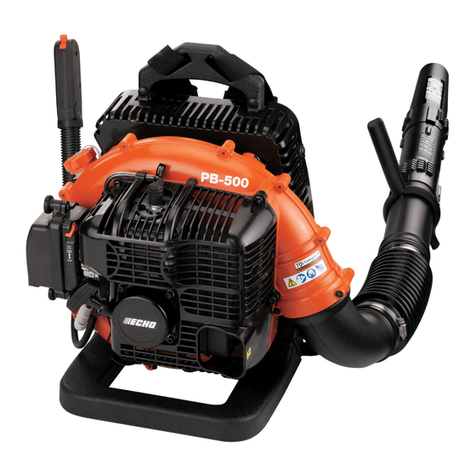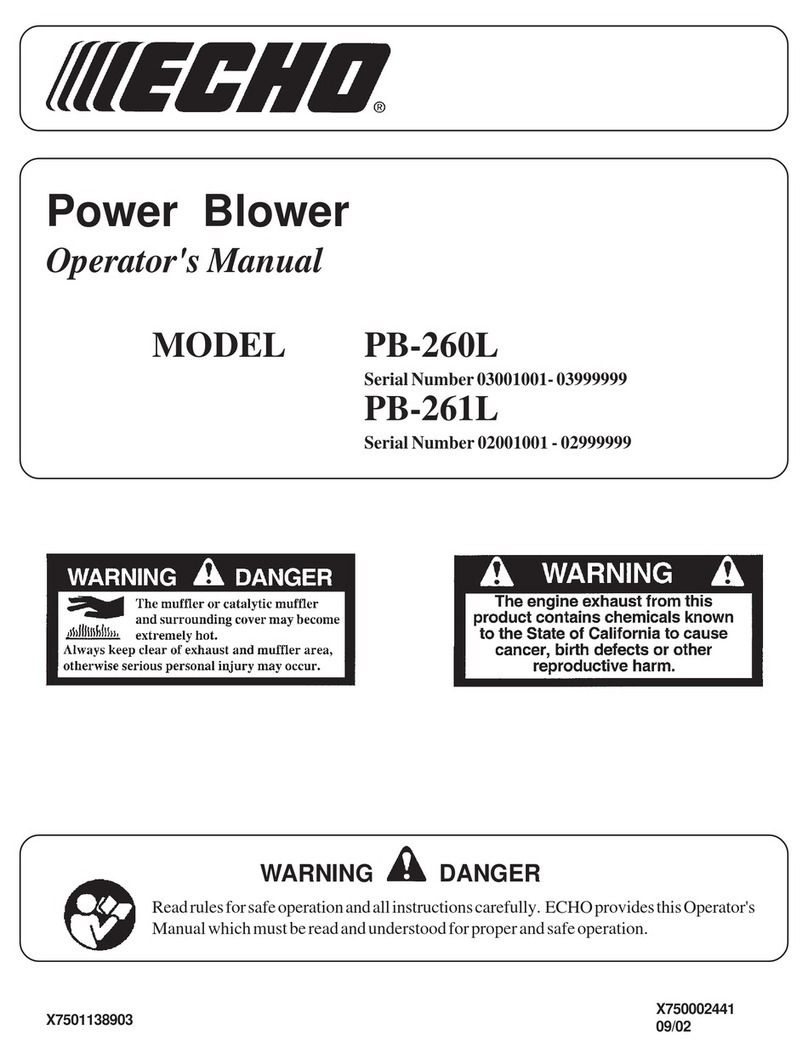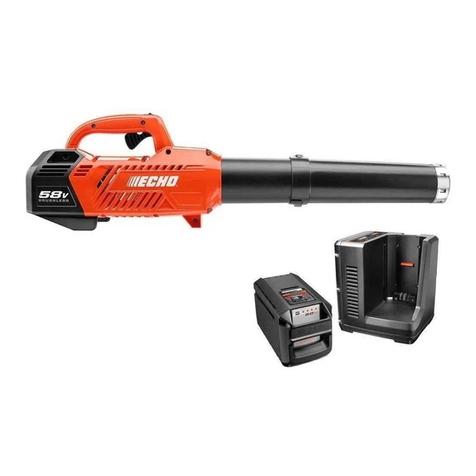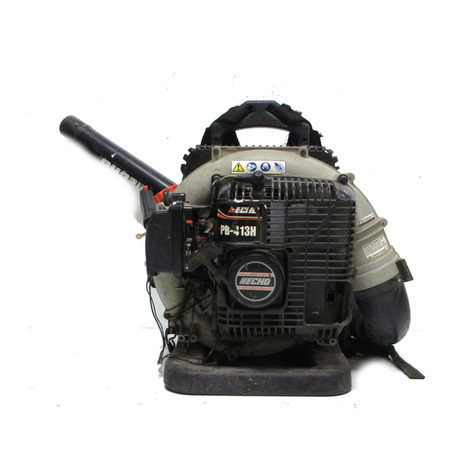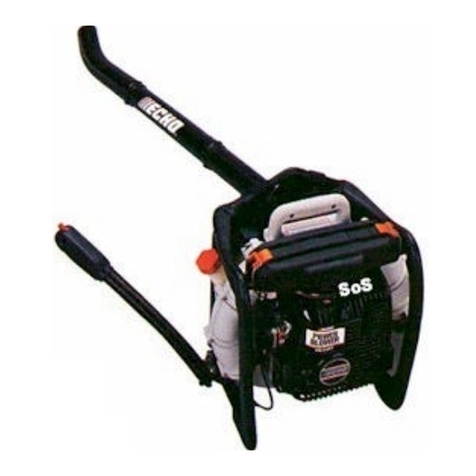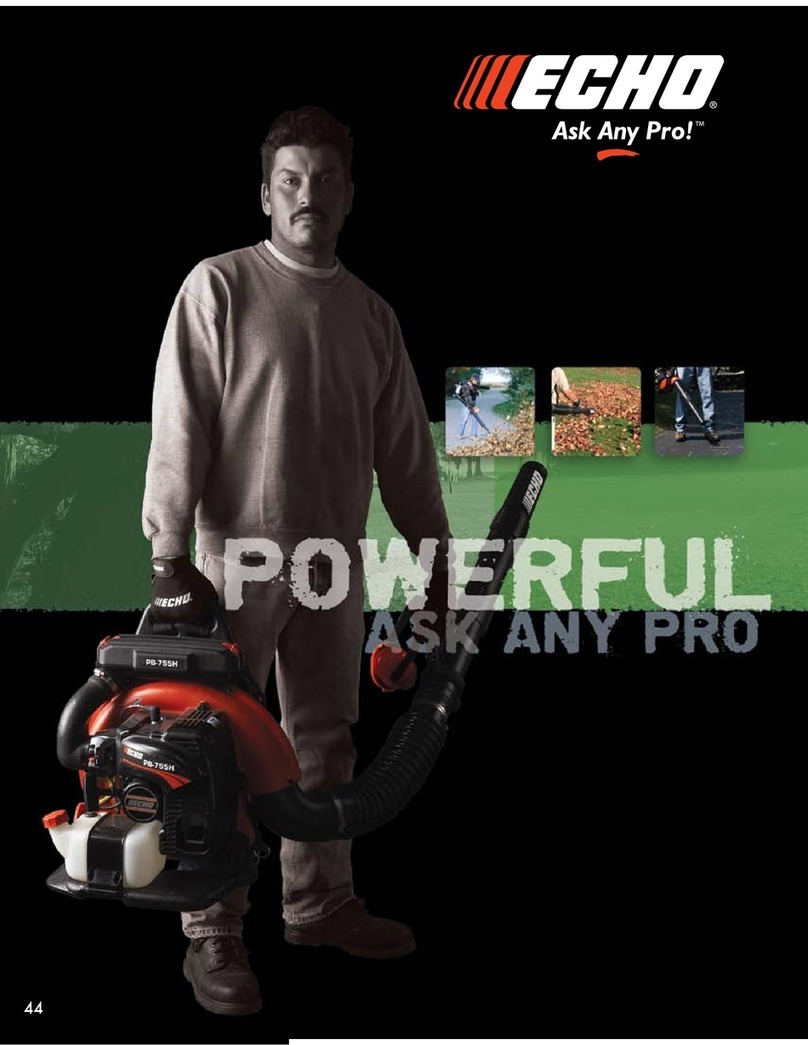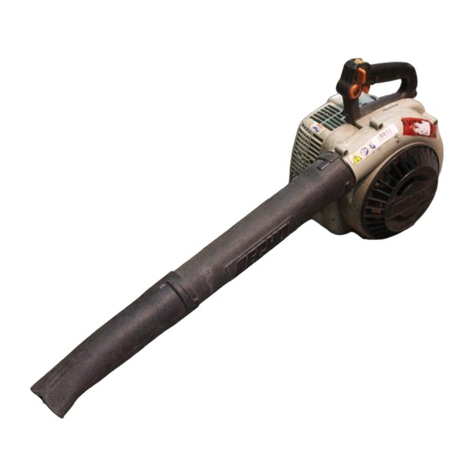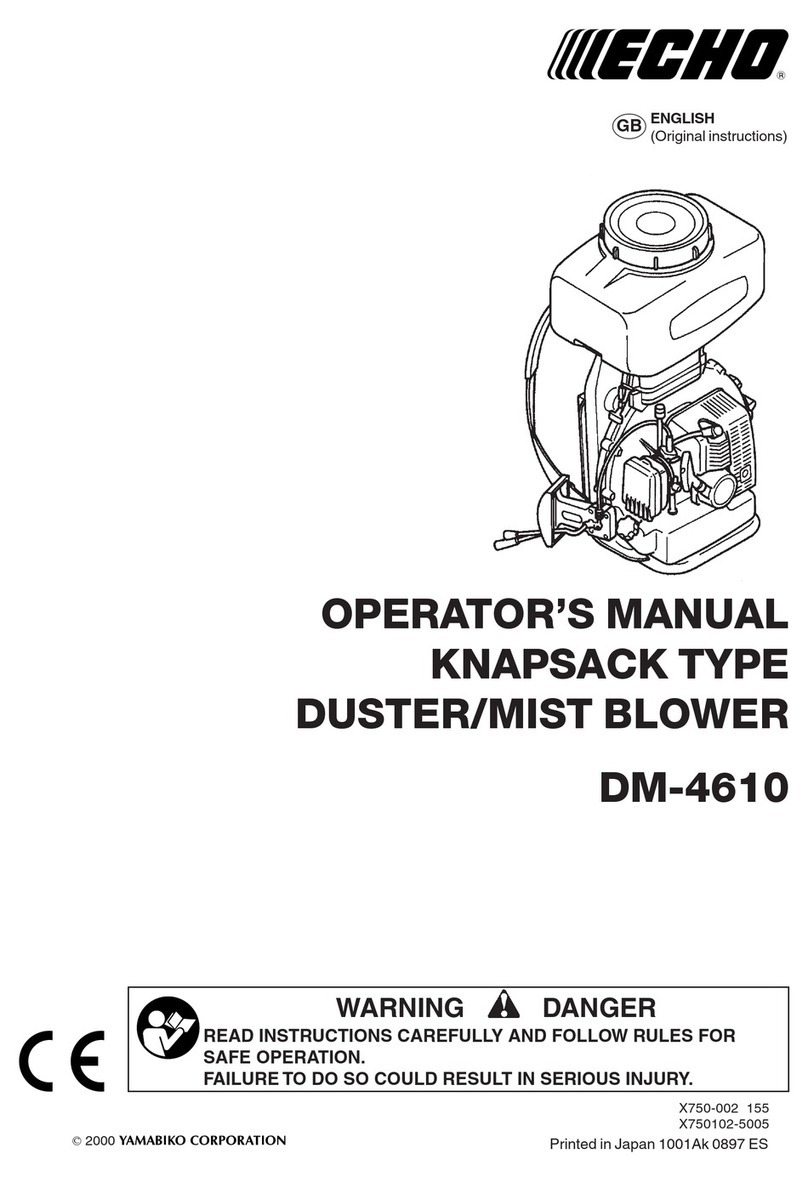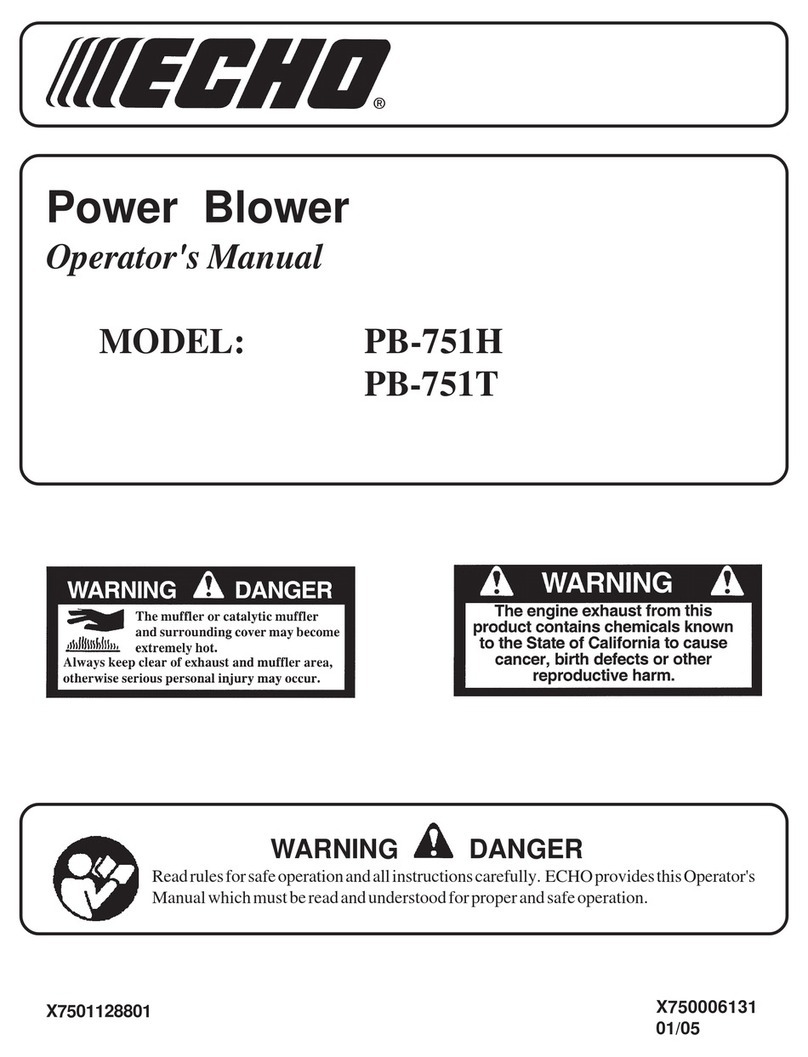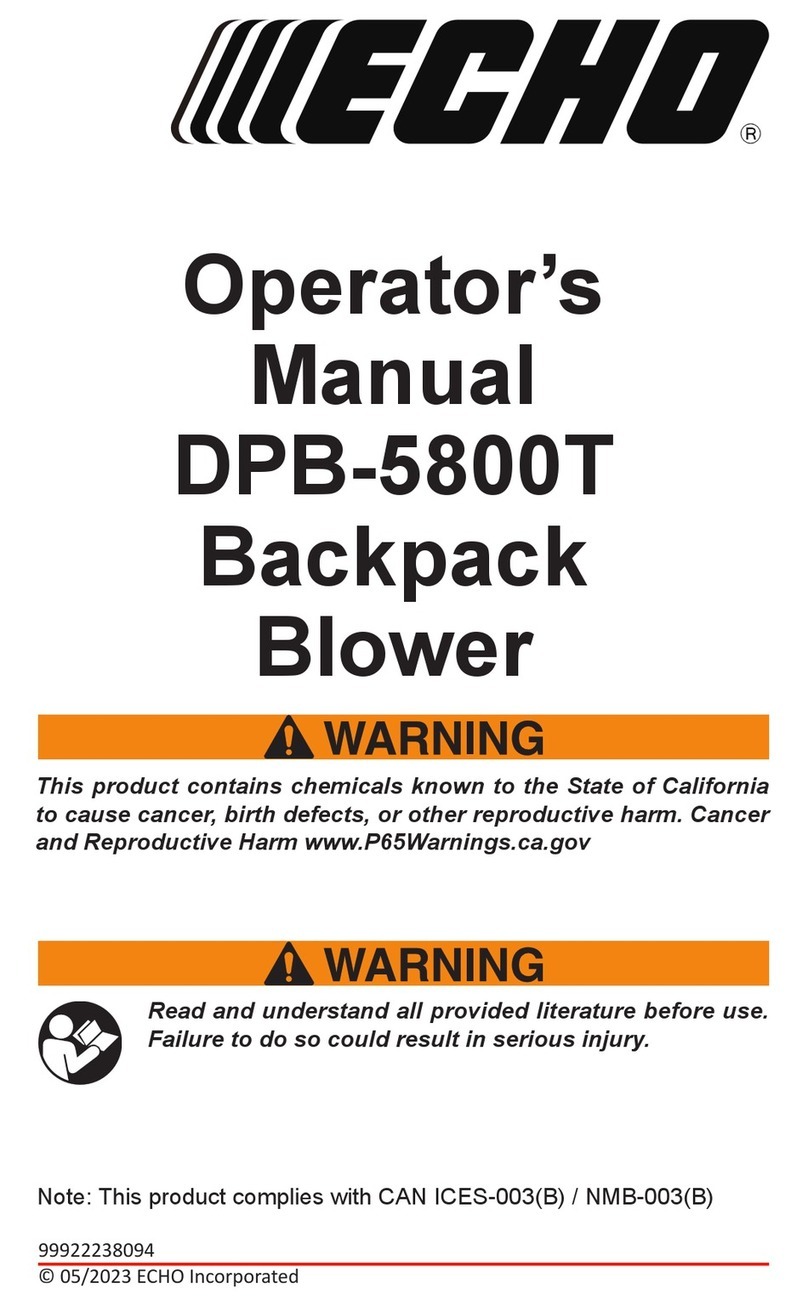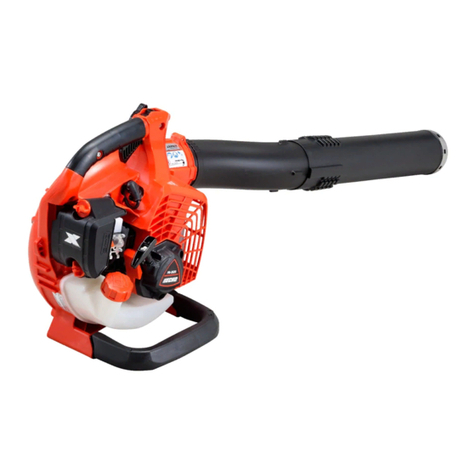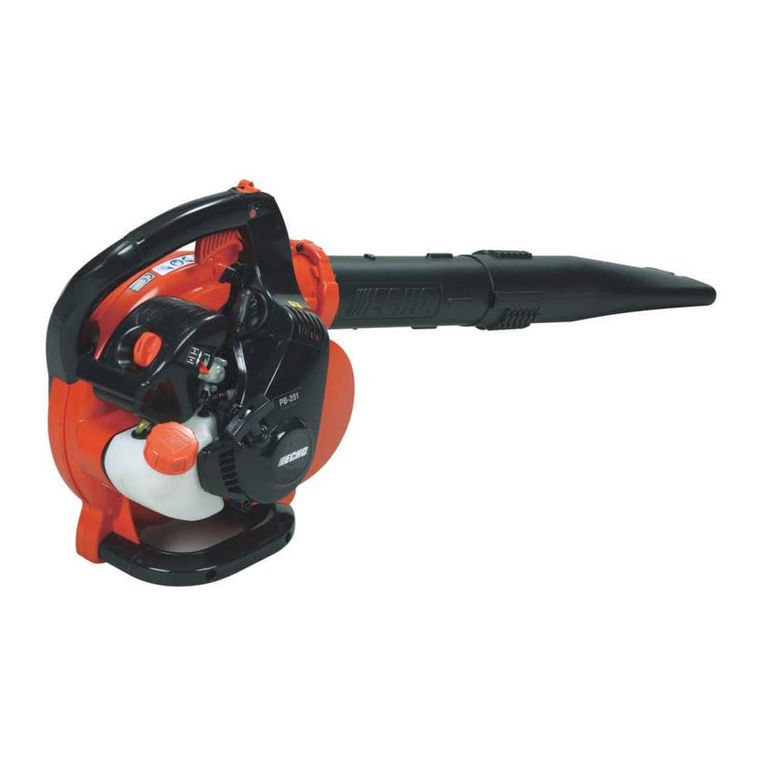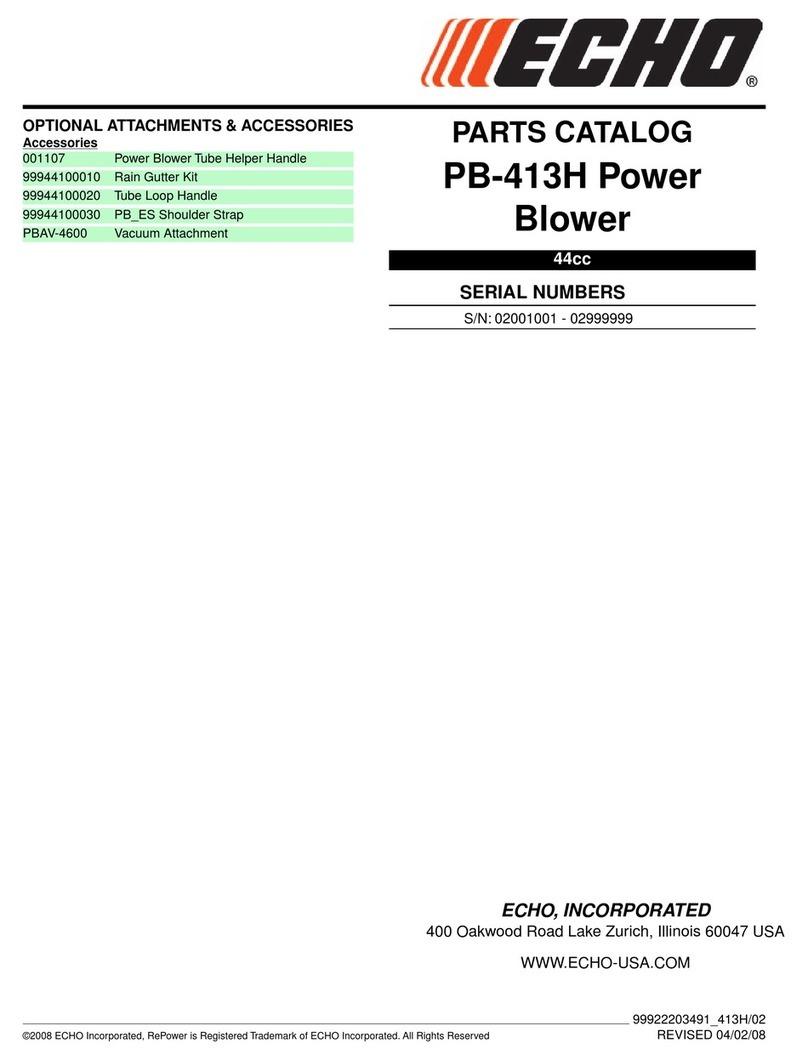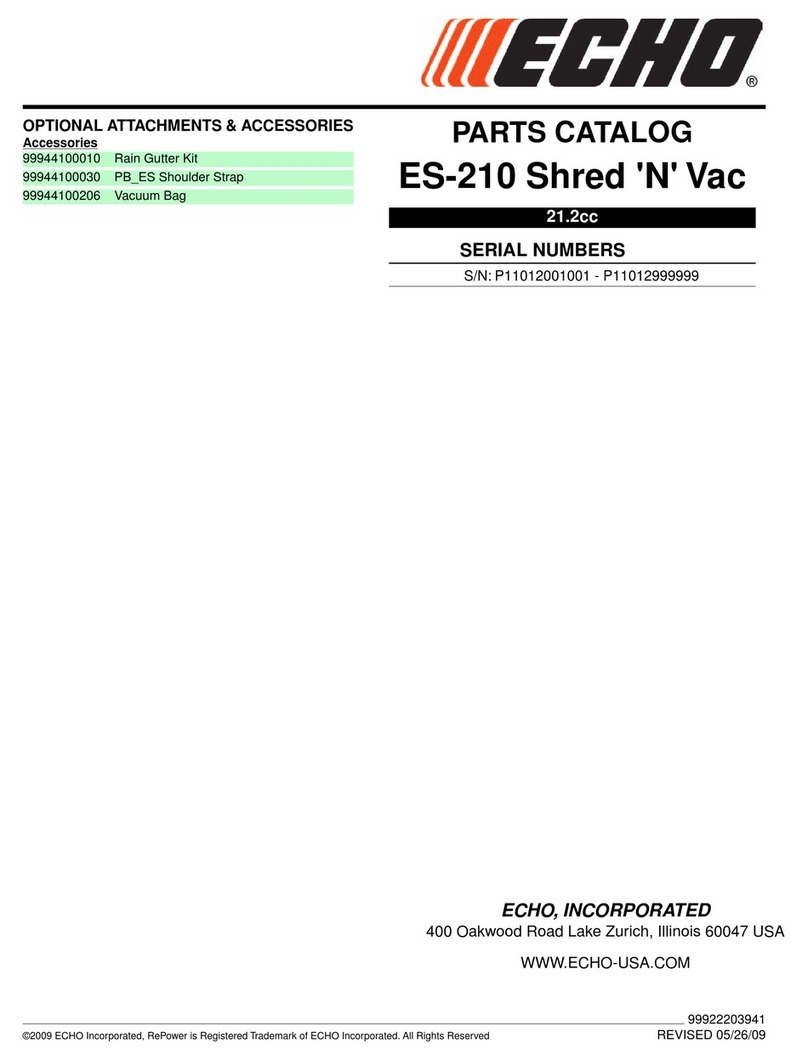
2
Copyright© 2010 By Echo, Incorporated
All Rights Reserved.
Ta b l e o f Co n T e n T s
Introduction................................................................2
- The Operator's Manual .......................................2
Safety .........................................................................3
- Manual Safety Symbols and Important
Information .........................................................3
- International Symbols.........................................3
- Personal Condition and Safety Equipment ......... 3
- Equipment Check................................................6
Emission Control .......................................................6
Description.................................................................7
Contents .....................................................................8
Assembly....................................................................9
- Blower Application.............................................9
Operation..................................................................10
- Fuel ...................................................................10
- Starting Cold Engine.........................................12
- Starting Warm Engine.......................................13
- Stopping Engine................................................13
- Operating Blower..............................................14
Maintenance.............................................................15
- Skill Levels .......................................................15
- Maintenance Intervals.......................................15
- Air Filter ...........................................................16
- Fuel Filter..........................................................16
- Spark Plug.........................................................17
- Cooling System.................................................17
- Exhaust System.................................................18
- Carburetor Adjustment......................................20
- High Altitude Operation ................................20
Troubleshooting .......................................................21
Storage .....................................................................22
Specications ...........................................................23
Warranty Statements ................................................ 24
Servicing Information ..............................................28
- Parts/Serial Number..........................................28
- Service ..............................................................28
- ECHO Consumer Product Support...................28
- Warranty Card...................................................28
- Additional or Replacement Manuals ................28
Specications, descriptions and illustrative material in this
literature are as accurate as known at the time of publica-
tion, but are subject to change without notice. Illustrations
may include optional equipment and accessories, and may
not include all standard equipment.
In T r o d u C T I o n
Welcome to the ECHO family. This ECHO product was designed and manufactured to provide long life and on-the-
job dependability. Read and understand this manual. You will nd it easy to use and full of helpful operating tips and
SAFETY messages.
T h e o p e r a T o r 'sm a n u a l
Read and understand this manual before operation. Keep it in a safe
place for future reference. It contains specications and information
for operation, starting, stopping, maintenance, storage and assembly
specic to this product.
1
Power Blower
Operator's Manual
MODEL PB-251
X75300
09/06
X753118
WARNING
Read rules forsa fe operatio n and instruc tions carefully. ECHO provi des this Opera tor's
Manual,which must be read and understood for proper and safeoperation.
PB251ef_091206.pmd
